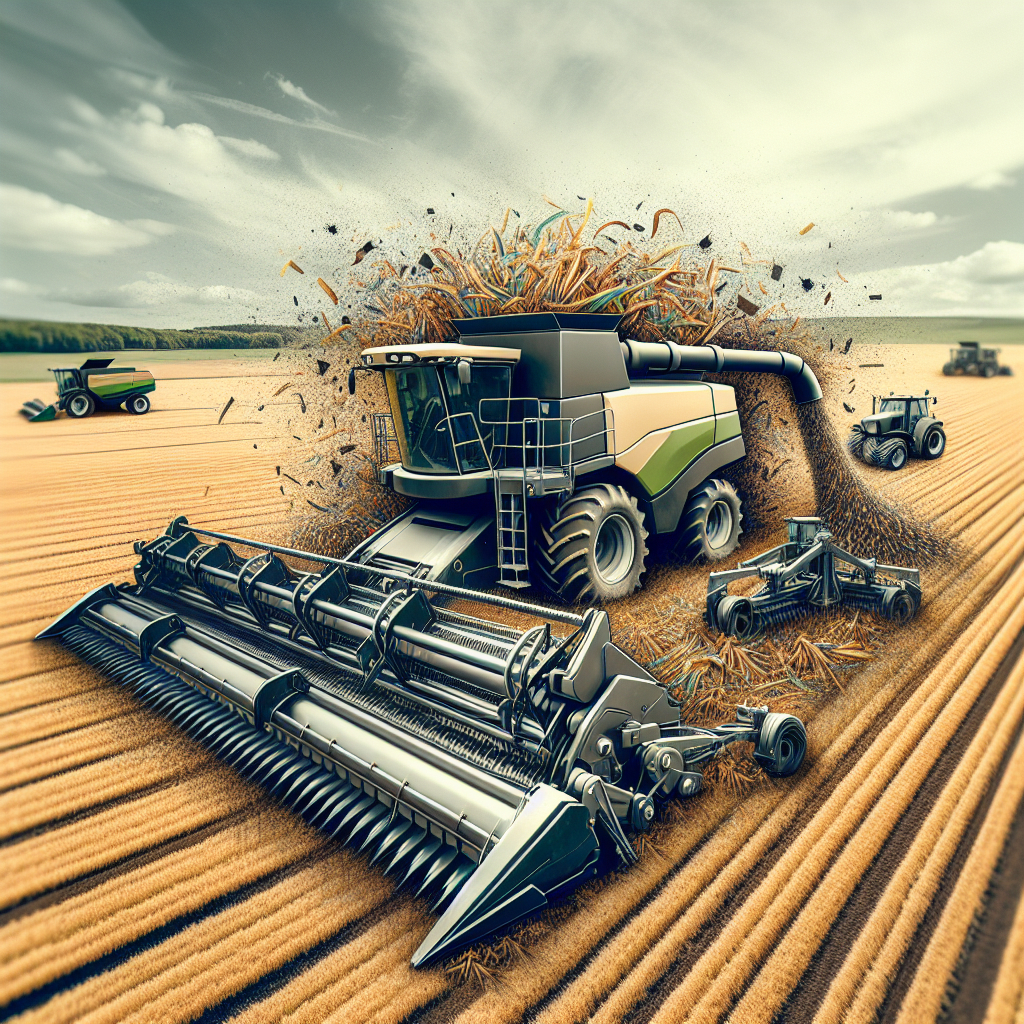Mulching machines have become an indispensable tool in modern agriculture, offering numerous benefits for both crop protection and soil health. These machines help farmers manage organic and inorganic materials to create a protective layer over the soil, which can significantly improve crop yields and sustainability. In this article, we will explore the various types of mulching machines, their benefits, and how they contribute to sustainable farming practices.
Types of Mulching Machines
Mulching machines come in various types, each designed to handle specific tasks and materials. Understanding the different types can help farmers choose the right equipment for their needs.
Flail Mowers
Flail mowers are versatile machines that use a series of small, flail-like blades to chop vegetation into fine pieces. These machines are particularly effective for managing thick grass, weeds, and even small branches. The chopped material is then spread evenly over the soil, creating a natural mulch layer that helps retain moisture and suppress weeds.
Rotary Mulchers
Rotary mulchers use rotating blades to cut and shred plant material. These machines are ideal for handling larger debris, such as crop residues and prunings. The shredded material can be left on the field as mulch or collected for composting. Rotary mulchers are commonly used in orchards, vineyards, and other areas with substantial plant waste.
Straw Mulchers
Straw mulchers are specialized machines designed to spread straw evenly over the soil. Straw is an excellent mulching material because it decomposes slowly, providing long-term soil protection and nutrient release. These machines are often used in vegetable gardens, flower beds, and other areas where straw is a preferred mulch.
Wood Chippers
Wood chippers are powerful machines that can process branches, logs, and other woody materials into small chips. These chips can be used as mulch to improve soil structure and fertility. Wood chippers are particularly useful for managing tree prunings and other woody debris in orchards and forests.
Benefits of Mulching Machines
Mulching machines offer a range of benefits that can enhance crop production and soil health. Here are some of the key advantages:
Moisture Retention
One of the primary benefits of mulching is its ability to retain soil moisture. The mulch layer acts as a barrier, reducing evaporation and keeping the soil moist for longer periods. This is particularly important in arid regions or during dry spells, as it helps ensure that crops receive adequate water.
Weed Suppression
Mulching also helps suppress weed growth by blocking sunlight and creating a physical barrier. This reduces the need for chemical herbicides, promoting a more sustainable and eco-friendly farming practice. Additionally, fewer weeds mean less competition for nutrients, allowing crops to thrive.
Soil Temperature Regulation
Mulch acts as an insulating layer, helping to regulate soil temperature. In hot climates, it keeps the soil cooler, protecting plant roots from extreme heat. In colder regions, it helps retain warmth, extending the growing season and protecting crops from frost damage.
Soil Erosion Prevention
Mulching machines play a crucial role in preventing soil erosion. The mulch layer helps anchor the soil, reducing the impact of wind and water erosion. This is particularly important on slopes and in areas prone to heavy rainfall, where soil erosion can be a significant problem.
Improved Soil Fertility
As organic mulch decomposes, it adds valuable nutrients to the soil, improving its fertility and structure. This promotes healthy root development and enhances the overall productivity of the land. Mulching machines help distribute organic material evenly, ensuring that all areas of the field benefit from the added nutrients.
Sustainable Farming Practices
Mulching machines are an integral part of sustainable farming practices, helping farmers reduce their environmental impact while improving crop yields. Here are some ways in which these machines contribute to sustainability:
Reduced Chemical Use
By suppressing weeds and retaining moisture, mulching reduces the need for chemical herbicides and irrigation. This not only lowers production costs but also minimizes the environmental impact of farming. Reduced chemical use leads to healthier soil and water systems, benefiting both the farm and the surrounding ecosystem.
Enhanced Biodiversity
Mulching promotes a healthy soil ecosystem by providing habitat and food for beneficial organisms such as earthworms, insects, and microbes. These organisms play a crucial role in breaking down organic matter, improving soil structure, and enhancing nutrient availability. A diverse soil ecosystem contributes to the overall health and resilience of the farm.
Carbon Sequestration
Mulching helps sequester carbon in the soil, reducing greenhouse gas emissions. As organic mulch decomposes, it adds carbon to the soil, where it is stored for long periods. This process helps mitigate climate change by capturing carbon that would otherwise be released into the atmosphere.
Waste Reduction
Mulching machines enable farmers to recycle plant waste, turning it into valuable mulch rather than disposing of it. This reduces the amount of waste sent to landfills and promotes a circular economy. By reusing plant material, farmers can close the nutrient loop and create a more sustainable farming system.
Conclusion
Mulching machines are a vital tool for modern agriculture, offering numerous benefits for crop protection, soil health, and sustainability. By understanding the different types of mulching machines and their applications, farmers can make informed decisions to enhance their farming practices. The use of mulching machines not only improves crop yields but also contributes to a more sustainable and environmentally friendly agricultural system. As the demand for sustainable farming continues to grow, mulching machines will play an increasingly important role in shaping the future of agriculture.
